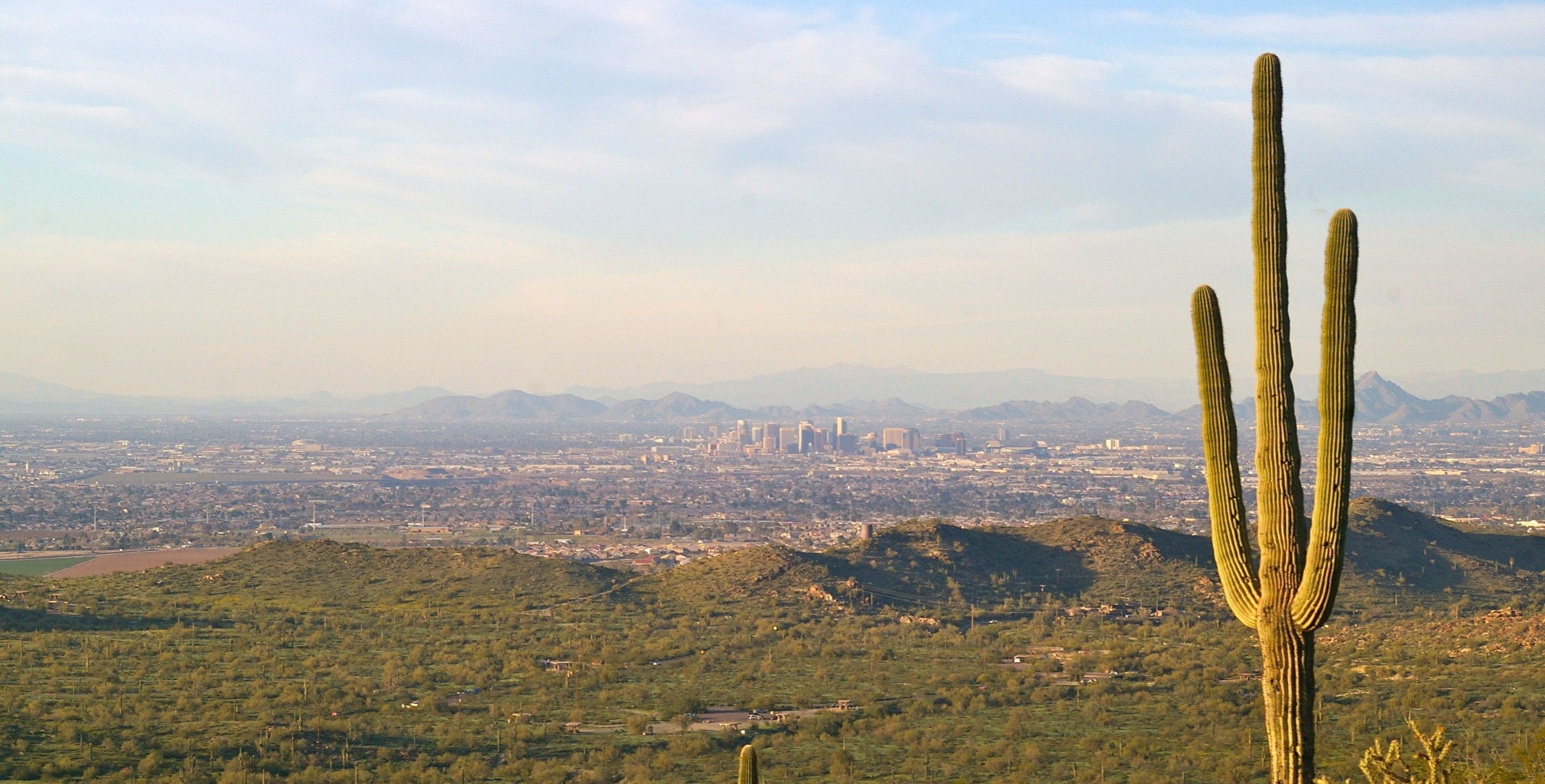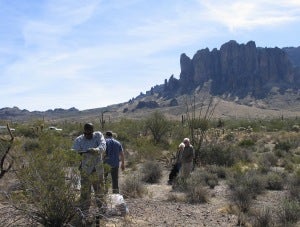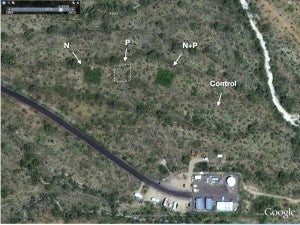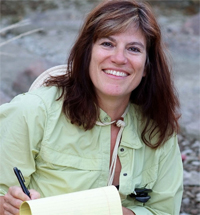
Aridland ecosystem response to nutrient deposition from the urban atmosphere
 How does atmospheric pollution alter the ecology of urban and near-urban native ecosystems? Using both long-term monitoring and experimental fertilizer additions, we are exploring the ecological consequences of atmospheric nutrient enrichment and ozone pollution across an urban-rural gradient of 15 sites in Sonoran Desert open space preserves within and surrounding the Phoenix metropolitan area. As a long-term experiment within the CAP LTER project, we have been monitoring plant productivity, spring wildflower diversity and composition, and soil properties since 2006. See a map of our long-term Sonoran Desert open space sites and read more about the project as a Research Highlight of the CAP LTER.
How does atmospheric pollution alter the ecology of urban and near-urban native ecosystems? Using both long-term monitoring and experimental fertilizer additions, we are exploring the ecological consequences of atmospheric nutrient enrichment and ozone pollution across an urban-rural gradient of 15 sites in Sonoran Desert open space preserves within and surrounding the Phoenix metropolitan area. As a long-term experiment within the CAP LTER project, we have been monitoring plant productivity, spring wildflower diversity and composition, and soil properties since 2006. See a map of our long-term Sonoran Desert open space sites and read more about the project as a Research Highlight of the CAP LTER.

Experimental nutrient enrichment plots in the Sonoran Desert. Spring herbaceous primary production is most responsive to N (nitrogen) and N+P (nitrogen+phosphorus) additions (visible as green squares).
In 2015, we began a partnership with the Central Arizona Conservation Alliance of Central Arizona (CAZCA) to launch a joint CAP LTER-citizen scientist initiative to survey spring wildflower communities across the urban-rural gradient. Read more about the CAP LTER-CAZCA Community Wildflower Survey here.
- M. Christman, S.J. Hall, and B.A. Ball. Nutrient dynamics during early-stage photodegradation of plant litter in an arid, urban ecosystem. In review at Journal of Arid Environment
- M. Davis, E. Cook, S. Collins, and S.J. Hall. 2015. Top-down vs. bottom-up regulation of herbaceous primary production and composition in an arid, urbanizing ecosystem. Journal of Arid Environments, 116; 103-114. doi:10.1016/j.jaridenv.2015.01.018.
- Y. Marusenko, F. Garcia-Pichel, and S.J. Hall. 2015. Ammonia-oxidizing archaea respond positively to inorganic N addition in desert soils. FEMS Microbiology Ecology, 91(2):1-11.
- Sponseller, RA., S.J. Hall, D. Huber, N.B. Grimm, J.P. Kaye, C. Clark, and S. Collins. 2012. Variation in monsoon precipitation drives spatial and temporal patterns of Larrea tridentata growth in the Sonoran Desert. Functional Ecology, DOI 10.1111/j.1365-2435.2012.01979.x.
- Kaye, J.P., S.E. Eckert, *D.A. Gonzalez, J.O. Allen, S.J. Hall, R.A. Sponseller, and N.B. Grimm. 2011. Decomposition of urban atmospheric carbon in Sonoran Desert soils. Urban Ecosystems, DOI 10.1007/s11252-011-0173-8
- Hall, S.J., R.A. Sponseller, N.B. Grimm, D. Huber, J.P. Kaye, C. Clark, and S. Collins. 2011. Ecosystem response to nutrient enrichment across an urban airshed in the Sonoran Desert. Ecological Applications, 21(3): 640-660.
NSF-DEB Award #0514382 (Ecosystem responses to the urban atmosphere)
NSF LTER/Central Arizona–Phoenix Long-term Ecological Research Program, BCS-1026865






